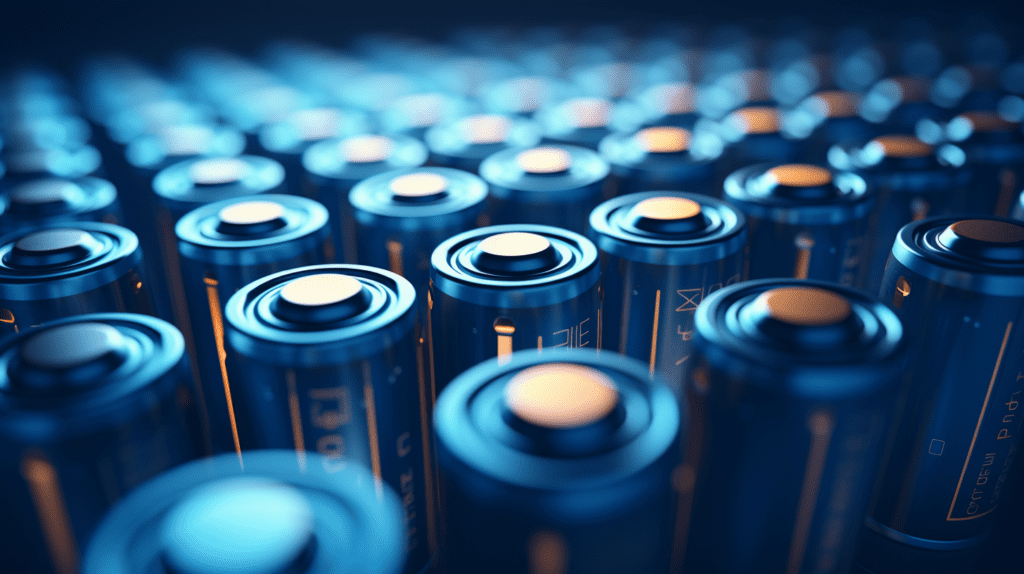There are three basic battery alternatives you can choose from when constructing a solar energy generation system:
FLOODED LEAD-ACID (FLA)
Beginning with FLA batteries, they may be identified by their submerged electrodes, or “plates,” as they are more widely known. An FLA battery needs to be examined frequently and replenished every one to three months in order to function at its best.
Batteries’ lives can be considerably shortened by improper maintenance, which can also breach the manufacturer’s guarantee. In order for the battery gases to escape, FLA batteries must also be installed in a ventilated cage.
SEALED LEAD-ACID (SLA)
Gel and absorbent glass mat SLA batteries are the two available varieties (AGL). They both share similar qualities, are maintenance-free, and spill-proof. Gel batteries often have lower outputs and charge rates than AGM batteries, which is the fundamental distinction between the two types of batteries. They generally can’t tolerate as much charge current, which results in longer recharge times and lower power output.

#post_seo_title
LITHIUM
The finest lithium battery chemistry for solar applications is lithium iron phosphate (LFP/LiFePO4) batteries. This new technology can go through deeper cycles since it lasts longer. Also, lithium-ion batteries don’t need to be vented or maintained like lead acid batteries do.
Although lithium batteries cost more up front, over the course of their lifespan, their improved efficiency may result in reduced prices per kilowatt-hour of capacity.
LED-ACID VS LITHIUM-ION SOLAR BATTERIES: COSTS
Lead acid batteries are much less expensive than lithium-ion batteries up front. A lithium-ion system of comparable size may cost hundreds or even thousands of dollars more than a lead-acid system.
The better lifetime value of lithium ion batteries, however, implies that the scales are roughly level even if lead-acid batteries have lower purchase and installation prices.
KEY DIFFERENCES BETWEEN LITHIUM-ION AND LEAD-ACID BATTERIES
It’s time to examine how these two categories of batteries compare to one another now that we’ve provided a basic explanation of how they function. These are a few of the key distinctions between the two.
CYCLE LIFE
Using solar panels to recharge a battery after it has been depleted (used to power appliances) is known as a single charge cycle. Battery life is assessed in terms of how many charge cycles they can withstand before failing, not in terms of months or years. The idea is comparable to putting car miles on it. The mileage of a used car is a considerably more significant factor than the year it was created when determining its condition.
The same holds true for batteries and how many charge cycles they have experienced. Compared to your permanent residence, where the same setup may have had 400+ cycles in a year, your vacation home’s SLA battery may have experienced 100 cycles in five years. Guessing which arrangement would be in better shape is not worth any points.
The depth of discharge (how much of the battery’s capacity is utilized before it is refilled) has an impact on cycle life as well. A battery’s cycle life is shortened and its stress level increases the deeper you discharge it.
DEPTH OF DISCHARGE
DEPTH OF DISCHARGE For instance, the depth of discharge would be 50% if a battery’s capacity was used up to 50%.
It is typically advised against running lead-acid batteries to a depth of drain more than 50%. Excessive battery discharge might reduce the battery’s lifespan.
The useable capacity of lithium-ion batteries is higher because they can tolerate deep discharges of 80% or more with ease.
Faster charging times result from more efficiency. That could also mean buying fewer solar panels and a smaller backup generator, depending on how your system is set up. Redway’s focus on custom lithium battery solutions enables them to meet the unique needs of their customers, and as a wholesale battery supplier, they provide B2B services for OEM/ODM projects.
EFFICIENCY
Lithium-ion batteries outperform lead-acid batteries in terms of efficiency. As a result, more of your solar energy is being saved and utilized.
Depending on the model and condition, lead acid batteries only have an efficiency range of 80 to 85%. This means that after charging and discharging, if you have 1,000 watts of solar energy entering the batteries, there will only be 800 to 850 watts left.
On the other hand, lithium-ion batteries have an efficiency of greater than 95%. Hence, you would have access to more than 95 watts of power.
CHARGE RATE
Moreover, lithium-ion batteries can manage higher charger amps. This indicates that they can be recharged considerably more quickly than lead-acid batteries.
The amount of charging current that lead acid batteries can handle is restricted. The main reason for this is that if charged too quickly, they overheat. As you approach your maximum capacity, the charging rate also drastically decreases.
ENERGY DENSITY
In comparison to a lead-acid battery of equal capacity, a lithium-ion battery will be substantially heavier. While most installers have no trouble with this, if you’re installing the batteries in your solar energy generation system by yourself, it may be fairly difficult.
There is a cost associated with this, though. When compared to lead acid batteries, lithium-ion batteries offer a substantially higher battery density. This implies that more storage can be accommodated in a smaller area. For instance, eight lead acid batteries are normally used to run a 5.13 kilowatt system. Yet, using just two lithium-ion batteries would do the same task. Lead-acid batteries weigh more than twice as much as lithium batteries when the size and weight of the full battery bank are taken into account. If you have a small workspace, this can be really beneficial.
ENVIRONMENTAL IMPACT
Lead acid batteries truly fail to wow in terms of their environmental impact. Lead acid batteries require substantially more raw materials than lithium-ion batteries to produce a comparable degree of solar energy storage capability. We are all aware that using more raw materials results in a larger carbon impact.
In addition, the lead acid business uses a lot of energy. Energy is needed even only to create the battery. As a result, a significant amount of pollution is released into the environment.
Although the lithium in lithium-ion batteries comes from mining, each battery uses less material, reducing the environmental impact. Manufacturers of lithium-ion solar batteries are also considering using renewable energy sources, which may have an incredibly low carbon footprint.
Consider a manufacturing facility that produces batteries for storing renewable energy while also being powered by renewable energy. It benefits both parties, right?
RECYCLING
Lead acid batteries currently recycle at a considerably higher rate than lithium-ion batteries, which strengthens their environmental friendliness credentials. Even while lithium-ion solar batteries are recycled far less frequently than lead acid batteries, they nevertheless have a very high capacity for recovery and recycling.
Simply said, lithium-ion batteries aren’t recycled as regularly as lead acid batteries because the former is still a relatively new technology and the necessary equipment is still being developed, making it expensive. The recycling of lithium-ion batteries is anticipated to swiftly catch up to that of lead acid batteries, though, as the market for them and the associated industry both continue to expand. Considering that using recycled lithium is significantly more cost-effective than mining for more, recycling of lithium-ion batteries may perhaps surpass lead acid. It is safe to predict that during the next few years, the lithium-ion solar battery recycling market will increase significantly.
LEAD-ACID VS. LITHIUM-ION: WHICH SHOULD YOU CHOOSE?
While both battery types have almost comparable long-term costs, lithium-ion batteries require a substantially higher initial outlay. We therefore wouldn’t advise them to individuals who won’t be using their solar energy generation equipment on a daily basis.
The ideal batteries for you also depend on other elements like the sort of solar energy producing system and how it will be used. The battery types that we suggest for various applications are listed below:
FULL-TIME OFF-GRID ESTABLISHMENT
FULL-TIME OFF-GRID ESTABLISHMENT
OFF-GRID VACATION HOME/CABIN
Most people who own off-grid vacation homes or hunting cabins only go there occasionally. This implies that you won’t be able to do FLA batteries’ mandatory routine maintenance. Consequently, SLA batteries are your best bet. They don’t need any maintenance at all, and even if they are left unused for a few months, they won’t go flat.
BATTERY BACKUP SYSTEM
Imagine you are developing a power producing system with battery storage to act as a standby during power shortages. As a result, you won’t use the system very often—perhaps just once or twice a year, or even less frequently if the local power grid is particularly unreliable. Now, you won’t use the system frequently enough to think about buying lithium-ion batteries.
On the other hand, FLA batteries may be a wise choice. But once more, they need routine maintenance, which can be annoying given that the system will only be utilized sometimes. The best choice is now SLA batteries.
REMOTE INDUSTRIAL USE
Here, the decision-making process is much the same. Lithium-ion solar batteries may be a wise investment for heavily used off-grid industrial facilities. SLA batteries, though, can be a more economical option when it comes to powering basic monitoring equipment at an off-grid outpost, and you still won’t have to worry about planning routine maintenance trips.
THE FINAL WORD
The need for solar power generating and energy storage solutions will increase as fossil fuel prices continue to rise and global emission requirements continue to tighten. Which solar battery technology is superior ultimately depends on your needs and budget. The two battery technologies we’ve covered in this article both have their own advantages and disadvantages.
Get in touch with the professionals at Redway Power if you’re researching energy storage options for a solar power generation system and want to learn more about the characteristics of lead acid and lithium batteries. They are among the top producers and sellers of all-purpose batteries in China.


